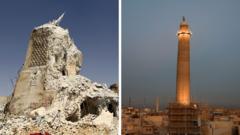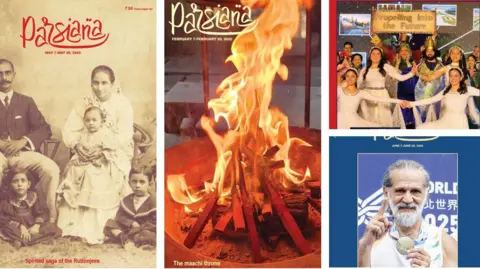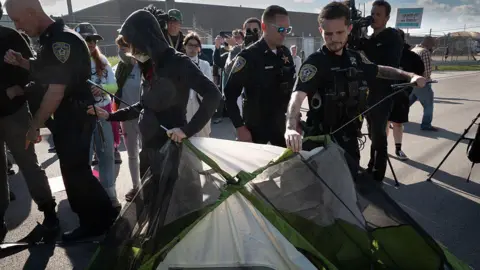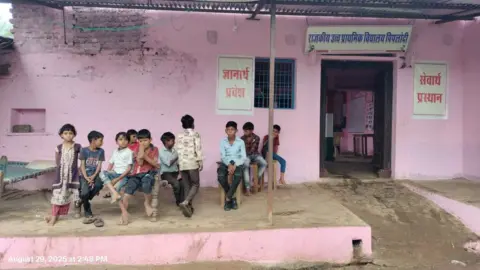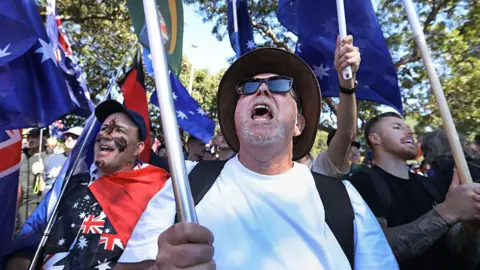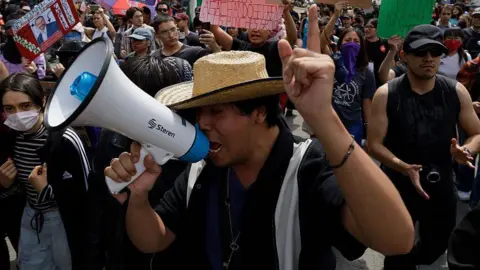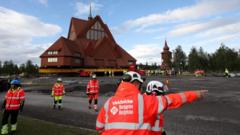Amidst the ruins left by the Islamic State (IS), Mosul is experiencing a renaissance with the reopening of its historic buildings, including churches and mosques. This ambitious restoration project, led by Unesco, was initiated in 2018, a year after IS was driven out of the city in 2017. The ceremony celebrating the reopening of these landmarks will be attended by Unesco's director-general Audrey Azoulay, Iraqi Prime Minister Mohammed Shia' al-Sudani, local artisans, and representatives from various religious communities in Mosul.
The city fell under IS control in 2014, marking a dark chapter in its history, where it became a symbol of intolerance and violence as minorities were targeted and opposing voices silenced. The liberation of Mosul came after intense battles involving a US-backed coalition and the Iraqi army. The aftermath left the Old City largely in ruins, including the famed leaning al-Hadba minaret, which had defined its skyline for centuries.
Photographer Ali al-Baroodi recalls the haunting sights he encountered during his first return in 2017 — a landscape marred by destruction and despair. He describes it as a "metamorphosis" of the city that held so much history and hope. The scale of devastation prompted a concerted effort to rebuild not only physical structures but also the fabric of the community that once thrived in relative harmony.
With a total budget of $115 million, largely funded by the United Arab Emirates and the European Union, Unesco is spearheading the restoration of 124 homes, two mansions, and various religious sites. Father Olivier Poquillon, a Dominican priest, emphasizes the significance of re-establishing trust among the diverse communities to overcome the wounds of the past. His involvement in restoring the convent of Notre-Dame de l'Heure demonstrates an essential step in reviving the historic district's spirit.
Architect Maria Rita Acetoso, pivotal in leading the project, stresses that the cultural revival is pivotal for job creation and skills development. More than 6,000 jobs have been generated, and local youth have been trained in traditional crafts, igniting a sense of cultural pride among the younger generations in a region plagued by turmoil.
As bells ring once more from restored sites like al-Tahera Church, residents are allowed to return to their homes, many of which have been in families for generations. Mustafa expresses gratitude for returning to his 19th-century home, while Abdullah reflects on the joy of seeing his family house resurrected.
Despite the obstacles that still lie ahead for Mosul, the resurgence of its Old City provides a beacon of hope. As Ali al-Baroodi captures the city's evolution, he likens it to witnessing a "dead person coming back to life," capturing the profound spirit of resilience embedded in the community. This process not only signifies the physical rebuilding of Mosul but also the hearts and souls of its people as they embrace a future filled with promise and renewed identity.
The city fell under IS control in 2014, marking a dark chapter in its history, where it became a symbol of intolerance and violence as minorities were targeted and opposing voices silenced. The liberation of Mosul came after intense battles involving a US-backed coalition and the Iraqi army. The aftermath left the Old City largely in ruins, including the famed leaning al-Hadba minaret, which had defined its skyline for centuries.
Photographer Ali al-Baroodi recalls the haunting sights he encountered during his first return in 2017 — a landscape marred by destruction and despair. He describes it as a "metamorphosis" of the city that held so much history and hope. The scale of devastation prompted a concerted effort to rebuild not only physical structures but also the fabric of the community that once thrived in relative harmony.
With a total budget of $115 million, largely funded by the United Arab Emirates and the European Union, Unesco is spearheading the restoration of 124 homes, two mansions, and various religious sites. Father Olivier Poquillon, a Dominican priest, emphasizes the significance of re-establishing trust among the diverse communities to overcome the wounds of the past. His involvement in restoring the convent of Notre-Dame de l'Heure demonstrates an essential step in reviving the historic district's spirit.
Architect Maria Rita Acetoso, pivotal in leading the project, stresses that the cultural revival is pivotal for job creation and skills development. More than 6,000 jobs have been generated, and local youth have been trained in traditional crafts, igniting a sense of cultural pride among the younger generations in a region plagued by turmoil.
As bells ring once more from restored sites like al-Tahera Church, residents are allowed to return to their homes, many of which have been in families for generations. Mustafa expresses gratitude for returning to his 19th-century home, while Abdullah reflects on the joy of seeing his family house resurrected.
Despite the obstacles that still lie ahead for Mosul, the resurgence of its Old City provides a beacon of hope. As Ali al-Baroodi captures the city's evolution, he likens it to witnessing a "dead person coming back to life," capturing the profound spirit of resilience embedded in the community. This process not only signifies the physical rebuilding of Mosul but also the hearts and souls of its people as they embrace a future filled with promise and renewed identity.

